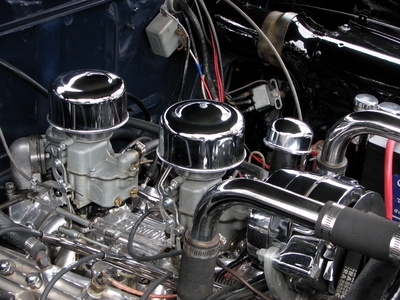
If you car engine is running hot and you are watching that temperature gauge climb higher and higher, especially while sitting in traffic, you know something is wrong. There is a normal process of elimination to follow to discover what the problem is, but first focus on the thermostat to see if it is the culprit before running out and buying a new one you may not even need.
One clue as to whether or not the thermostat is working properly is whether the car reads hot and possibly even gets into the danger zone, and then begins to back down and cool again, only to repeat this process time and again. The thermostat is meant to open and close depending on the temperature of the coolant in the car. If it is not opening at the correct temperature, it may allow the engine to get very hot before it opens, if it opens at all. You can get thermostats that open at different temperatures, from 160 degrees and up.
To actually test the thermostat, remove it from the thermostat housing in your car engine. To locate your thermostat, look to where the end of the top radiator hose leads on the engine. The housing will be at the end of the hose, and the thermostat is within the housing.
Before you remove the thermostat, you will need to drain the radiator partially down, so the coolant level in the radiator is below where the top hose connects to the radiator. You can save and reuse this coolant. Be sure the car engine and coolant is not hot when you drain the coolant. You may also disconnect the housing without first draining the coolant from the radiator, but you will need to be prepared to either absorb or catch the coolant, which is in the hose at the time, usually about 1 to 2 quarts.
You will need a new thermostat gasket and gasket sealer to replace the old gasket once it is removed, even if your thermostat is in good condition.
Disconnect the thermostat housing from the engine block, and you will find your thermostat sitting in the engine block. Remove the gasket and pull out the thermostat. Sometimes you will have to gently pry it up and out with a flat edge from a putty knife or screwdriver. Also clean all the old gasket material from the mating surface of the thermostat housing and engine block for replacement later on. The mating surface must be smooth and clean.
A simple test to discover if the thermostat is opening or not is to heat up some water on the stove to a specific temperature of about 180 degrees, using a thermometer to determine the temperature, and then place the thermostat into the water. If it is working properly, it will quickly open up. Sometimes, rust has accumulated on the thermostat and holds it shut. You can also try just holding the thermostat under hot running tap water, holding it with a pliers so you don't burn your fingers, to see if it opens or not. This is not as scientific, though.
Another test would be to test-drive the car without a thermostat at all. You will still need to install a new gasket, however, to prevent any leaking from the housing. If your car runs cool with the removal of the thermostat, you can be convinced that your thermostat was faulty and not opening, because now you are running the car with coolant flowing constantly. In some very warm states, it's not uncommon for people to drive without a thermostat. This would be a problem, however, in cold months, as this would affect your compartment heat.